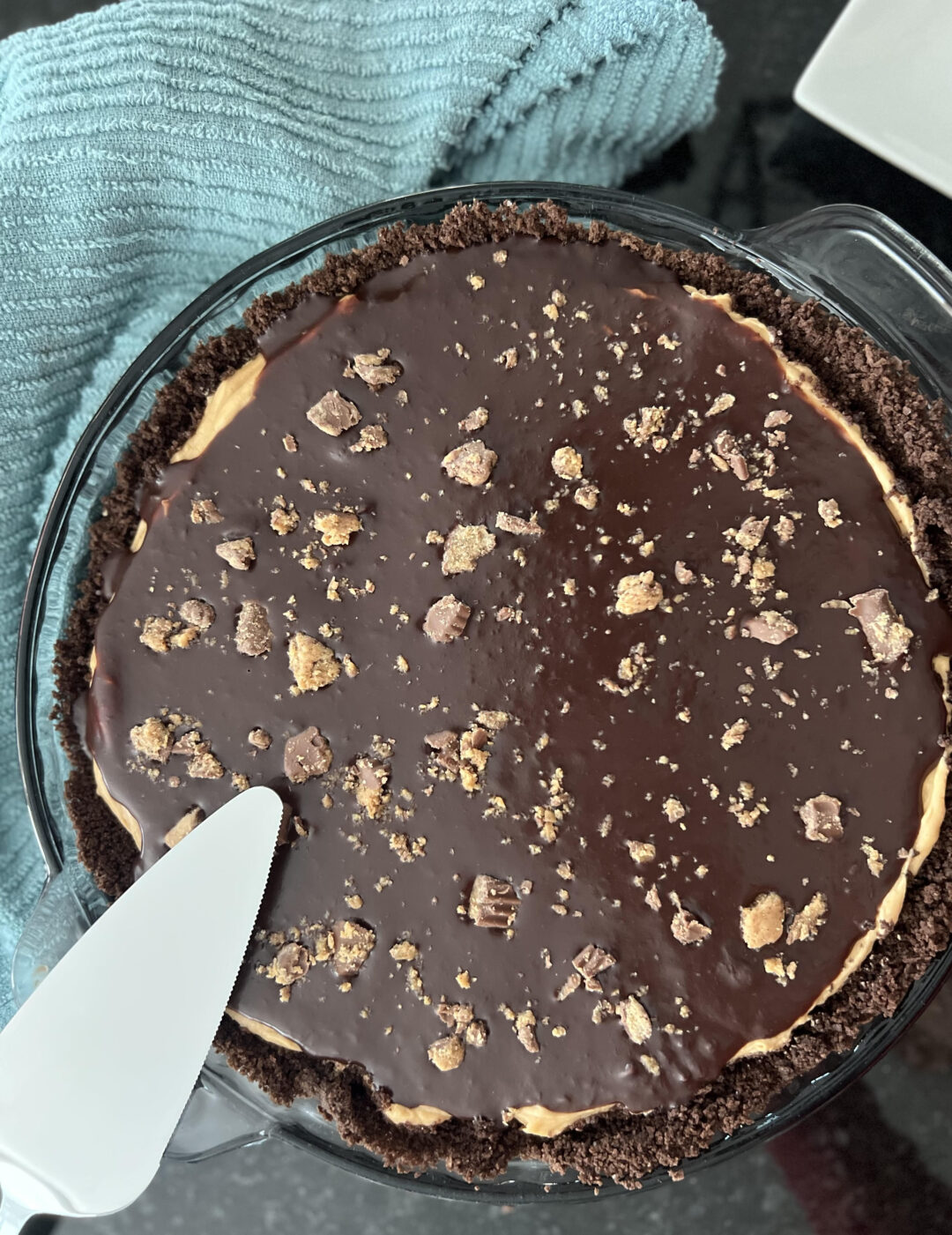My husband has been asking for a cream pie for quite some time. For whatever reason, another recipe always seemed to jump to the top of the list. So when I asked if he’d be interested in a Peanut Butter Cream Pie, he jumped at the chance. We already had everything at home, making a peanut butter pie the winner.
This Peanut Butter Cream Pie recipe is super easy to make. From the chocolately crust and decadent filling to the rich chocolate ganache topping, a little bit goes a long way. Plus, it’s easy to customize and finish with little extras like crushed peanut butter cups, crushed Oreos, or even a dollop of whipped cream.
The result? A decadent pie that you can serve for dessert, a get-together, or a potluck. Just be prepared for no leftovers.

Recommended Tools
Rolling pin – A rolling pin saved my life when crushing all those graham crackers! An alternative could be using a powerful blender or food processor. I was feeling lazy, though, and didn’t want an extra thing to wash. I love the attached rolling pin due to its non-stick design and the fact that it doesn’t contain any wood, making it easy to clean.
Glass pie pan – I highly recommend a glass pie pan for any pie. Not only does it look pretty on display, but it makes serving a breeze. Plus, it can be used for baked and no-bake pies.
Stand mixer – I love using my KitchenAid stand mixer to beat the whipping cream and mix the pie ingredients. If you don’t have a stand mixer, they are a phenomenal investment. I’ve had mine for 15 years and it is still going strong! An alternative that also works well is using a hand mixer.
Silicone spatula – I love using silicone spatulas for scraping bowls and getting out every last drop of whatever is in them. OXO makes one of my favorites. I love the sleek look and design.










